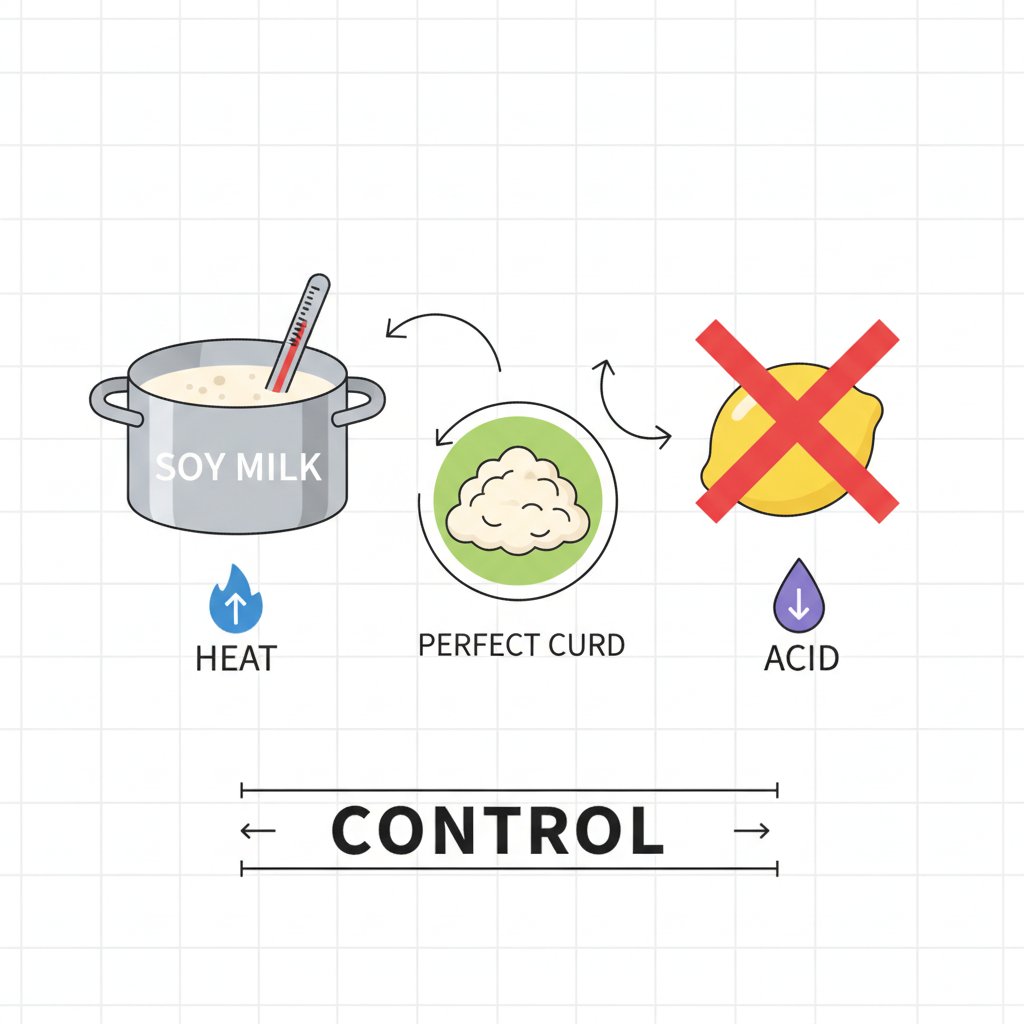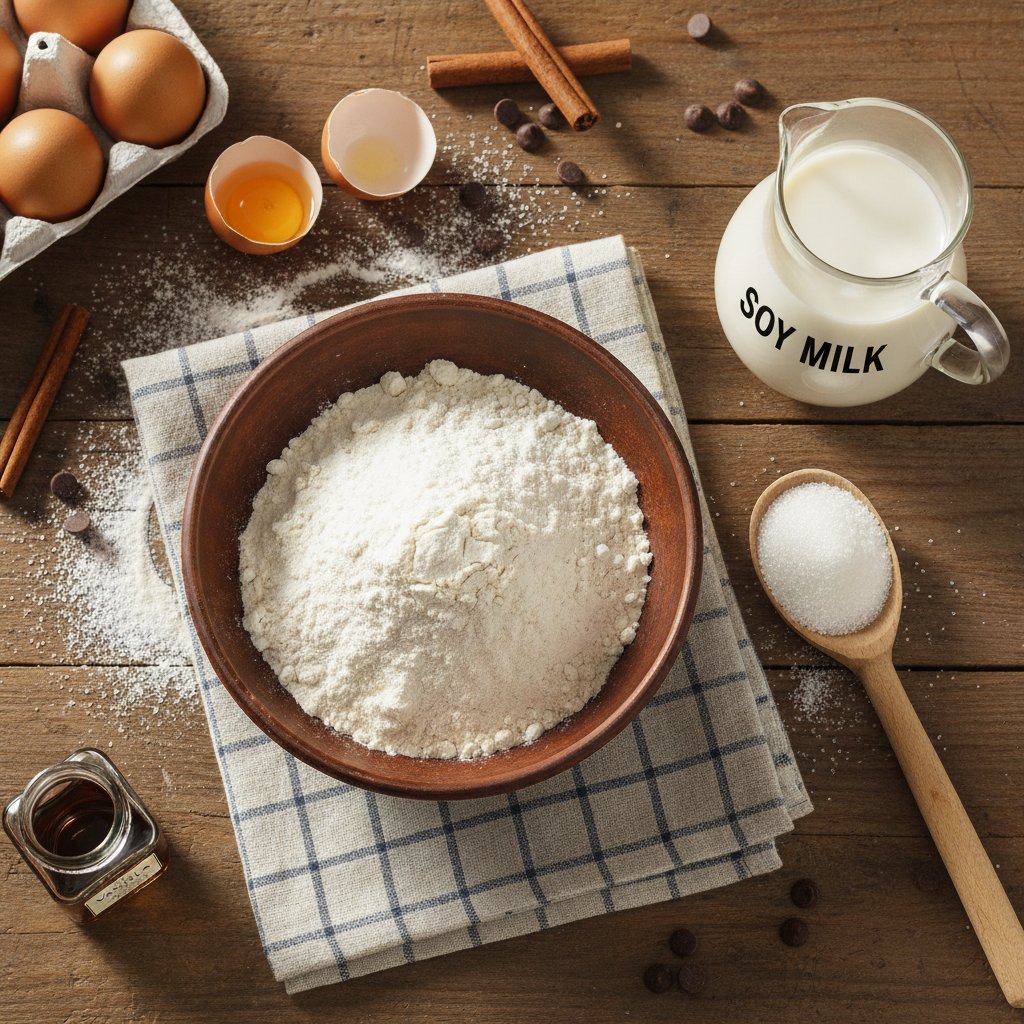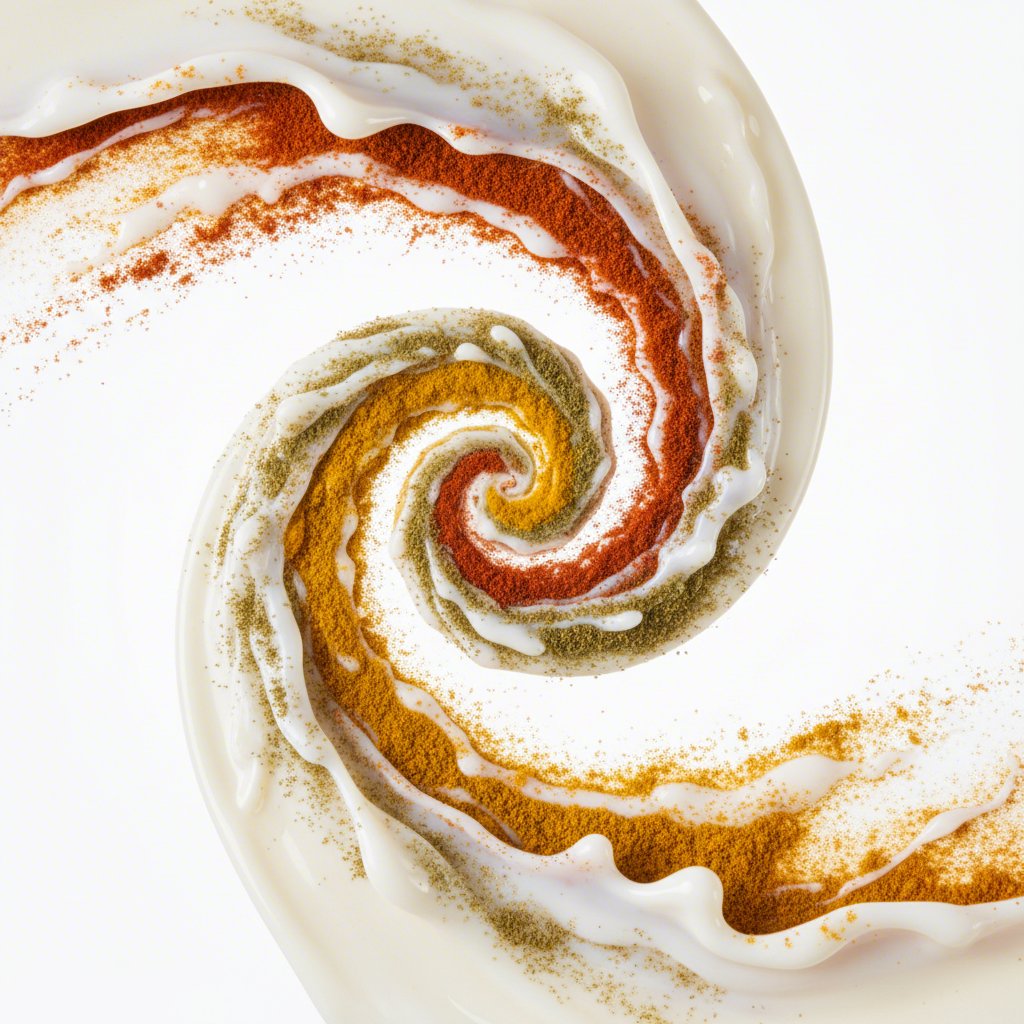TL;DR
Cooking with soy milk is a fantastic way to create dairy-free dishes, from sweet baked goods to savory sauces. The most critical technique is to prevent it from curdling by managing heat and acidity. Always warm soy milk gently before adding it to hot liquids, and avoid combining it directly with highly acidic ingredients like lemon juice or tomato sauce to ensure a smooth, creamy result every time.
The Golden Rules: How to Prevent Soy Milk from Curdling
The most common challenge when you cook with soy milk is curdling, which happens when the proteins in the milk clump together due to heat or acid. This can ruin the texture of an otherwise perfect dish. Understanding why this happens is the first step to preventing it. Soy milk has a high protein content, and when it’s exposed to high temperatures or acidic ingredients too quickly, these proteins coagulate and separate from the liquid, creating a grainy or lumpy consistency.
To avoid this, temperature control is your best friend. As recommended by food experts at Pacific Foods, you should never add cold soy milk directly to a boiling or very hot mixture. Instead, temper the milk by warming it gently in a separate saucepan over low heat. Once warm, you can slowly whisk it into your main dish. This gradual introduction helps the proteins adjust without shock, maintaining a smooth texture. This technique is essential for soups, sauces, and even your morning coffee.
Acidity is the other major factor. Adding soy milk to something highly acidic, like a tomato-based soup or a dish with a lot of lemon juice, can cause instant curdling. A clever trick, detailed in Tasting Table’s guide to common mistakes, is to add the acid to the milk rather than the other way around, or to ensure the dish has cooled slightly before incorporating the soy milk. For instance, when making a creamy tomato soup, remove the pot from the heat for a minute before stirring in the warm soy milk.
| High Risk for Curdling | Low Risk for Curdling |
|---|---|
| Adding cold soy milk to boiling coffee or soup. | Tempering soy milk by warming it first. |
| Combining soy milk with highly acidic ingredients (lemon, vinegar) over high heat. | Stirring soy milk into a lukewarm sauce. |
| Boiling soy milk rapidly. | Using soy milk in baked goods where it’s mixed with dry ingredients. |
By mastering these principles, you can confidently use soy milk to create creamy, delicious dishes without fear of separation. Here are five key steps to ensure success:
- Heat Gently: Always warm soy milk over low to medium heat. Never let it come to a rapid boil.
- Temper Your Milk: Before adding it to a hot liquid, warm the soy milk separately. Then, add a small amount of the hot liquid to the warm milk, stir, and then pour the tempered mixture back into the main pot.
- Mind the Acid: Introduce acidic ingredients slowly and preferably off the heat.
- Stir Consistently: When heating soy milk for sauces or drinks, stir it regularly to distribute the heat evenly and prevent scorching or separation.
- Choose Quality Products: Some brands are formulated to be more stable at higher temperatures. Opt for a rich, cream-colored soy milk over watery alternatives for better results.
A Guide to Soy Milk Varieties and Substitutions
Not all soy milks are created equal, and choosing the right one is crucial for the success of your recipe. The most significant distinction is between sweetened and unsweetened varieties. Sweetened soy milk, often flavored with vanilla, is perfect for smoothies, lattes, or some desserts, but it can ruin a savory dish. For creamy pasta sauces, soups, or gravies, always opt for plain, unsweetened soy milk to avoid an unwelcome sugary taste. It’s a common mistake to grab the wrong carton, so always double-check the label before you buy.
The good news is that for most recipes, you can substitute soy milk for dairy milk using a simple 1:1 ratio. Whether you’re baking muffins or making pancakes, you can swap in the same amount of soy milk without needing to do any complicated math. This makes it an incredibly accessible and easy-to-use dairy alternative. For those seeking fresh, high-quality plant-based milks, making your own at home can provide full control over ingredients and thickness. If you’re exploring this option, resources like Soy Milk Quick offer expert reviews and comparisons of plant milk makers to help you find the right machine for your kitchen.
One of the most versatile tricks in dairy-free cooking is creating a buttermilk substitute. This is especially useful in baking recipes that call for buttermilk to create a tender crumb, like in pancakes or certain cakes. To make a soy-based buttermilk, simply combine one cup of unsweetened soy milk with one tablespoon of an acid, such as lemon juice or apple cider vinegar. Let the mixture sit for about five to ten minutes. You’ll notice it starts to curdle slightly, which mimics the consistency and tangy flavor of traditional buttermilk perfectly.
To help you navigate the grocery aisle, here is a quick guide:
- For creamy pasta sauces, soups, and gravies: Use unsweetened, unflavored soy milk. Do NOT use vanilla-flavored or sweetened soy milk.
- For smoothies, lattes, and some desserts: Sweetened or flavored soy milk (like vanilla or chocolate) works well.
- For baking that needs a tender crumb: Use the soy milk and vinegar/lemon juice trick to create a buttermilk substitute.
- For a heavy cream substitute: Look for specific products labeled as soy cream or a high-fat soy milk intended for cooking, as regular soy milk may not provide enough richness.
Sweet Applications: Mastering Soy Milk in Baking and Desserts
Soy milk is an excellent performer in the world of baking and desserts. Its neutral flavor and protein structure help create moist and tender baked goods, making it an easy substitute in many recipes. As highlighted by Nutritious Eats, soy milk works beautifully in muffins and pancakes, where an equal substitution for dairy milk yields fantastic results. The key is to use unsweetened soy milk to maintain control over the sugar content and overall flavor profile of your final product.
From smoothies to ice cream, soy milk adds a creamy texture without overpowering other ingredients. In smoothies, it provides a smooth base and a boost of protein. When making dairy-free ice cream or milkshakes, its consistency helps create a rich, satisfying mouthfeel that’s very similar to dairy-based versions. You might notice a slight difference in color when using soy milk for things like frostings; because it’s naturally cream-colored rather than pure white, your frosting may have an off-white hue. This won’t affect the taste, but it’s something to keep in mind for presentation.
To get the best results when incorporating soy milk into your sweet creations, a few tips can make all the difference. Ensuring your soy milk is at room temperature before mixing it with other ingredients can help prevent batters from splitting, especially when combining it with fats like vegan butter or oil. This simple step promotes better emulsification and a more uniform texture in cakes, muffins, and other baked goods.
Here are the top five tips for baking with soy milk:
- Use Unsweetened, Plain Soy Milk: This gives you full control over the sweetness and flavor of your recipe.
- Create a Buttermilk Substitute: For recipes calling for buttermilk, use the vinegar or lemon juice trick to add tenderness and a slight tang.
- Bring It to Room Temperature: Cold soy milk can cause fats to seize. Let it sit out for about 30 minutes before using it in batters.
- Don’t Worry About the Taste: While plain soy milk has a distinct flavor on its own, it becomes completely neutral when baked into a dish.
- Sift Dry Ingredients: To ensure a light and airy texture, always sift your flour, leavening agents, and other dry ingredients before combining them with soy milk.

Savory Creations: From Creamy Soups and Sauces to Main Dishes
Unsweetened soy milk is a powerhouse ingredient for savory cooking, capable of creating luxuriously creamy textures in everything from soups and chowders to rich pasta sauces. Its higher protein content compared to many other plant-based milks, like almond or rice milk, often makes it more stable when heated, reducing the risk of it splitting or becoming watery. This makes it an ideal base for a dairy-free béchamel, vegan mac and cheese, or a creamy tomato soup. Just remember the golden rule: heat it gently and introduce it to hot dishes slowly to prevent curdling.
The culinary possibilities are vast. You can use it to create a creamy vegan gumbo, a tangy dairy-free ranch dressing, or as a base for a hearty fish chowder, as seen in recipes from Healthy Food Guide. In many East Asian cuisines, soy milk is a celebrated savory ingredient in its own right. For example, some hot pot recipes use it as a soup base, and a traditional Taiwanese breakfast involves savory hot soy milk curdled with vinegar and topped with chili oil and fried crullers.
Making a basic creamy sauce with soy milk is a foundational technique that can elevate countless dishes. This dairy-free alternative to a classic béchamel or cream sauce can be used as a base for casseroles, gratins, or pasta dishes. It’s simple to make and can be adapted with various herbs and spices to fit any flavor profile.
Here’s a step-by-step guide to a basic creamy soy-based sauce:
- Create a Roux: In a saucepan over medium heat, melt 2 tablespoons of vegan butter or oil. Whisk in 2 tablespoons of all-purpose flour and cook for one minute, stirring constantly, until it forms a smooth paste.
- Warm the Soy Milk: In a separate pot, gently warm 1.5 cups of unsweetened soy milk until it is warm to the touch but not boiling.
- Combine Slowly: Gradually pour the warm soy milk into the roux, whisking continuously to prevent lumps from forming. Start with a small splash and whisk until smooth before adding more.
- Thicken the Sauce: Continue to cook over medium heat, stirring often, for 3-5 minutes, until the sauce thickens to your desired consistency.
- Season to Taste: Remove the sauce from the heat and season with salt, pepper, and a pinch of nutmeg. You can also add nutritional yeast for a cheesy flavor or fresh herbs like parsley or thyme.

Your Path to Soy Milk Mastery
Cooking with soy milk opens up a world of creamy, delicious, and dairy-free possibilities. The key to success lies in understanding its properties and respecting a few fundamental techniques. By mastering temperature control to prevent curdling, choosing the right variety for your recipe, and embracing its versatility in both sweet and savory dishes, you can confidently make it a staple in your kitchen. Whether you’re whipping up a batch of tender pancakes or a rich and creamy pasta sauce, soy milk is a reliable and adaptable ingredient that proves plant-based cooking doesn’t mean sacrificing texture or flavor.
Frequently Asked Questions
1. How to use soy milk in cooking?
Soy milk is a versatile dairy substitute. Use unsweetened versions for savory dishes like creamy soups, sauces, and casseroles. Sweetened or flavored varieties are great for sweet applications like smoothies, oatmeal, pancakes, and muffins. In most recipes, it can be substituted for dairy milk in a 1:1 ratio.
2. What happens when you heat soy milk?
Soy milk is generally stable when heated, but it can curdle if heated too quickly or combined with acidic ingredients. High heat or rapid boiling can cause its proteins to separate, resulting in a grainy texture. To prevent this, always heat soy milk gently and temper it before adding it to hot liquids.
3. Can soy milk replace regular milk in cooking?
Yes, in most cases, soy milk can replace regular milk in cooking and baking using a one-to-one substitution. It works well in a wide range of recipes. While the flavor is slightly different, the texture and consistency of the final dish are usually very similar to those made with dairy milk.
4. Is there any downside to soy milk?
While soy milk is a nutritious plant-based option, some people may have a soy allergy. Additionally, some soybeans contain anti-nutritional factors, though modern processing methods significantly reduce these. For those without allergies, it is widely considered a healthy and safe dairy alternative.
